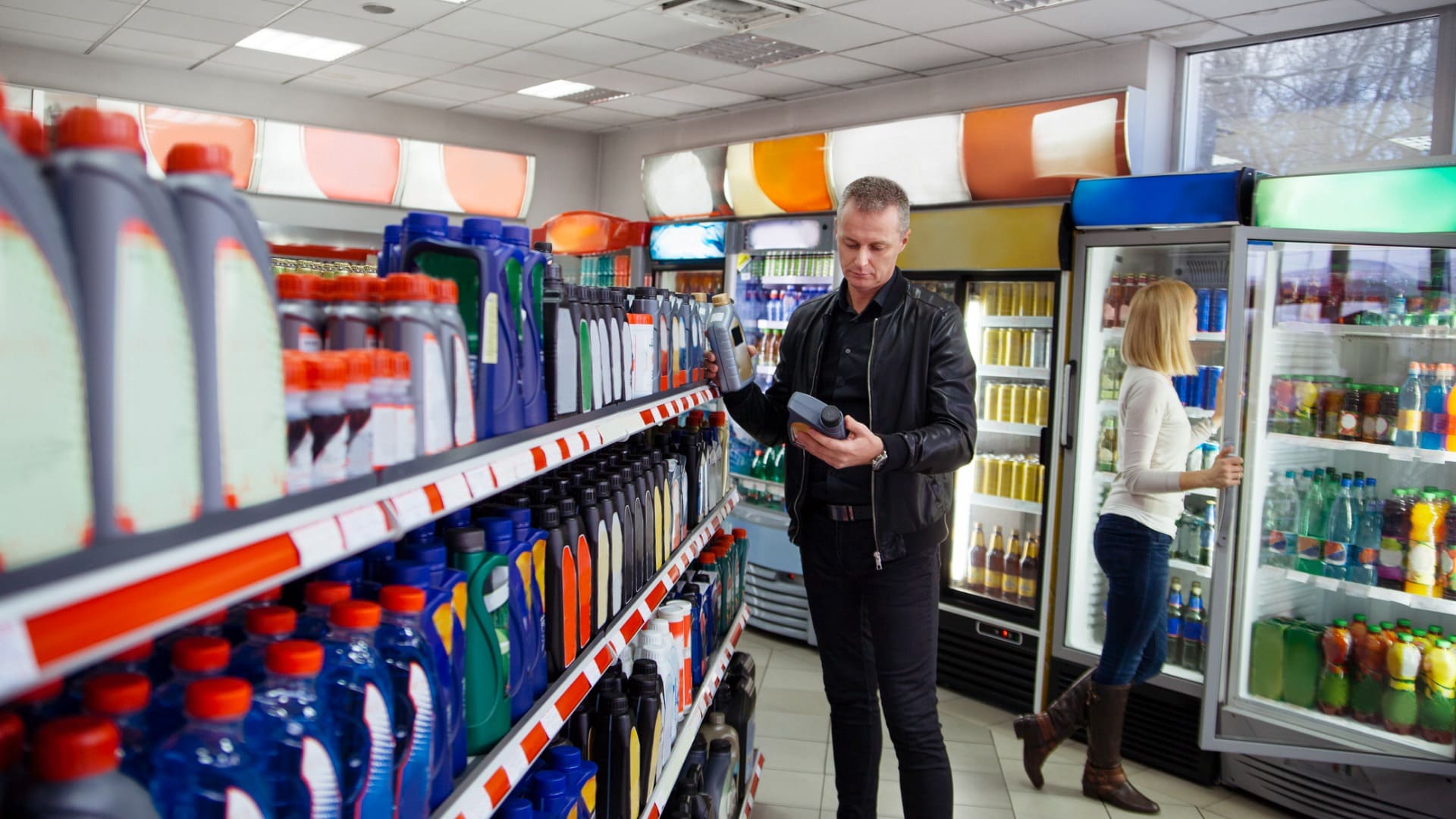We believe strongly that having control over and transparency into your labor management process is key to ensuring that you don’t simply survive these challenging times, but you instead position yourself for success both in the short, medium and long term.
Matt Lovitt, Senior Commercial Director
Managing a convenience outlet stands apart from running a traditional retail store. The connection with your people and your customer is amplified by the purpose you serve within the community. You may be the first stop for coffee in a busy city center, the heartbeat of a suburban community or the only source of essentials for more rural towns. Irrespective of your location, the expectation your customer places on you is unique—a specific product or service with a consistent level of availability and increasingly a wider range of what you offer. The principal challenge for convenience retailers is how to satisfy all of the above while growing the business and customer base—against a headwind of inflation, supply chain challenges, the evolution of frictionless trade, the continued increase on technological dependence, and crucially, the ongoing shortage in labor.
When we speak with our customers, it is our intent to ensure 1) they are strategically prepared to adapt to the change in local/global circumstance, and 2) they have the data and tools necessary to make pragmatic decisions to better position their business against those prevailing headwinds. The purpose of this thought piece is to outline why we believe strongly that having control over and transparency into your labor management process is key to ensuring that you don’t simply survive these challenging times but you instead position yourself for success both in the short, medium and long term.
Logile provides retail workforce management and execution compliance solutions, combining best-practices consulting with planning and execution software applications that enable retailers to maximize efficiency, customer service, employee satisfaction and profitability.
How well do you understand your business? A strange question, perhaps, but one not asked frequently enough. Convenience operations tend to function on “know how” process built over time to meet the unique needs of that operation. This strategy can make approaching continuous improvement difficult. The ability to reflect on the processes that underpin your business and tweak, refine and model areas of change that help you push ahead of the competition is critical. How do you do this accurately in a world based on “know how?” How do you know where the right place to start is, what your true baseline is, or what change will mean to your business?
This is where a labor model comes in.
Having visibility into the operations and associated processes that make up your organization is fundamental in understanding where you can drive efficiency in your company. It’s the foundation on which your site is built.
In a nutshell, a labor model should:
- Provide discrete visibility into your bottom-up labor requirements, so you can target where the most significant opportunities are
- Allow you to easily manage the right labor allocation at each store
- Provide transparency to stores to build confidence in their labor plans
- Empower you to run “what-if” simulation modeling, using integrated volumetrics, to evaluate continuous business process change
- Serve as the central hub supporting budgeting and scheduling
As outlined above, having a labor model in place is a fundamental starting point for building a culture of continuous improvement in-store and for gaining clarity into the processes required to run your operation. However, transparency regarding the true effort required to run your business isn’t the only the benefit stemming from increased control over labor management.
Fundamental to the success of any convenience operation is its people.
For many convenience operations, people are also the biggest opportunity. Increasingly, the ability to attract and retain the best people is becoming a real challenge. As an associate looking for work, I’ve never been in greater demand nor had a greater amount of flexibility and choice to structure how or where I work. Equally, our experience tells us that many operations don’t maximize the value their people offer. Partly because they’re not completing the most value-add activity while on the job, but also because a significant number of operations still don’t have people in place at the right time to fulfil customer demand.
Let’s focus on the last point made above: how you can better maximize what your people do while they’re at work, and how do you ensure they’re in the building when your customer needs them most? Culturally, as we’ve outlined above, what people do when they’re in store tends to be more fluid in a convenience operation than in other formats. Footfall can be more volatile in certain formats, and in others, culture dictates that “know how” rules the roost. A labor model solves part of the challenge here. What it doesn’t do on its own, though, is tell you when that activity needs to happen to meet demand. That’s where the power of an accurate forecast comes into its own. Forecasting demand, of any kind, within convenience can be a real challenge. The impact of even the slightest uplift in footfall is felt more keenly at a local level than it is in its larger-format cousin.
Do I have enough items to cover that uplift? What does it mean for availability for the rest of the day? Most importantly, though, do I have enough people in the building to cover that increase? A lack of support around any of these challenges can lead to an impact in customer service and product availability. Investment in a continuous forecast engine that leverages the data you’ve collated over years helps you identify patterns in trade that otherwise may have gone unnoticed.
What impact does weather have on my trade over the course of a week? How do specific events and promotions really impact sales? What does the impact of a competitor opening in the same area really mean to my business? Logile supports its customers in answering all these questions. Not only do we provide an industry-leading forecast engine that utilizes AI and machine-learning principles to drive more efficient and accurate forecasts, but we also invest in our data scientists, whose sole purpose is to support you in understanding the data you own and how to refine and plan your operation to maximize growth based on what the data reveals. Without this, you’re only really seeing part of the picture for your store(s), or perhaps the reality of your business is not what you’ve assumed to be true. It is through investment in forecasting technology, though, that you can better predict when you need your people the most to serve your customer and really take the next step in understanding how micro and macro impacts around your organization really affect the day to day, hour by hour and minute by minute of your in-store operations.
The aspect of managing people that is increasingly difficult is how to attract and retain the best people in a market where labor is at a premium.
Post-pandemic rates of employment globally have naturally started to correct, but people’s preference around how and when they work means select industries have felt the pinch of a shortage in available labor more acutely than others. Speaking with our customers, it certainly feels like the convenience industry is one of those sectors where finding the right people and getting them to stay is a reoccurring challenge. One of the aspects of the pandemic that was potentially unexpected was the acceleration toward greater flexibility in how individuals manage their own work-life balance. Culturally, it is now one of the biggest deciding factors in a prospective candidate selecting an employer. In a convenience market where pay is an increasingly level playing field for the majority, the impacts of a flexible working culture as a sales proposition are amplified even further.
So how can Logile help here? A lot of businesses have a schedule, but how many offer products that allow employees to influence what types of shift they work? When they are available to pick up additional shifts? Add in additional locations they’d be happy to support? Further, how many can do that in a solution that minimizes the impact to a manager’s time, ensures that the schedules produced are still contractually and legally compliant, and allows the associate and the manager to action requests and changes from wherever they are in the world? The answer for many we speak with is they are lacking in some if not all of these areas. Logile’s integrated employee self-service and scheduling tools empower your associates to take greater control over when and where they work within the parameters of your business rules and legal regulations. The integration between both solutions means that as employees are requesting changes to their schedule from their sofa, the manager can reply from the back office, and the automation in the schedule engine carries the change forward—eliminating the laborious process of manual pen-and-paper corrections. The expectation that people have greater control over their own time isn’t merely a trend. It isn’t something that your business can ride out and continue to offer a static schedule with fixed reward. This is a new societal norm many of your competitors are tuned into, so if your product strategy is unable to help you here then you’ll probably continue to ask yourself why you can’t get the people you need or keep the ones you already have.
What has been discussed so far focuses on solutions to challenges that are in front of you, but what about the ones that have yet to arrive?
One of the most difficult challenges any convenience business faces is positioning itself effectively for the future in a period where the reality of what the next three months will pose is unclear, let alone the next three years. At Logile we don’t have a crystal ball, but what we can and actively do is support our customers with modeling software designed to allow businesses to accurately and efficiently run hypothetical scenarios that better help them understand the impact of potential projects to their business. Those impacts can be measured both in the impact to a financial or hours budget as well as the impact to a store’s overall labor allocation. For example, let’s assume that in certain geographies you feel the trend toward frictionless trade is a route you would like to explore. Currently, creating a cost-benefit analysis of that project may involve a number of assumed benefits and be cumbersome to accomplish. This is likely because you don’t have a method for accurately measuring the impact on a labor model, or that information is held separately from any budgetary information and pulling sheets of Excel together is time consuming.
Our customers benefit from having one integrated solution that allows them to model change packages, leveraging production data in a sandbox environment that is connected to all aspects of the labor planning suite. This includes budgeting and store hours forecast information for as far out as 24 months. Utilizing Logile’s Standards and Staffing Analyzer, our customers are able to run multiple what-if scenarios at pace, allowing them to better understand the financial and labor impact of potential business changes. Like we say, we can’t tell you which scenario will ultimately play out—but what we can do is ensure that whichever decision you choose to go with is based on solid, data-driven analysis.
In summary
The intent in writing this commentary wasn’t to outline that running a convenience business is complex, nor was it to highlight that both on a local and global scale the headwinds facing your organization are strong and varied. Both of those statements have been written about frequently over the past few years. Rather, we hope this commentary has prompted thought regarding how investment in solutions that help you address the here and now, as well as what the future could look like, are imperative. Imperative to both continuing to meet the needs of your customers and employees as well as future-proofing your business in these uncertain times. All too commonly many of the companies we talk with still see pens and paper or Excel as adequate solutions to managing their workforce. Our view here is simple: labor is the rock upon which your organization is built. It’s your largest controllable cost, and your employees are your biggest asset. So why wouldn’t you want to ensure that your people are delivering the most value to your customers when they need you the most?
This post, originally published September 20, 2022, was updated September 12, 2023 for currency of content.




